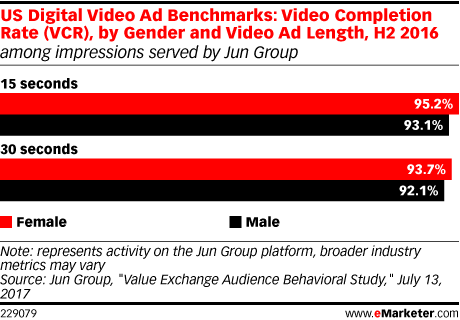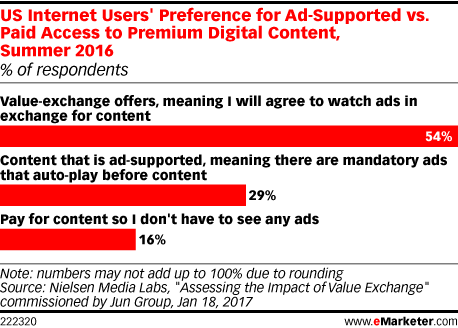Reward users and they’ll watch your video ads in full
Most viewers finish a video ad when promised a reward
In fact, almost everyone – if we look at the data by eMarketer, based on ad delivery of the advertising agency Jun Group.
It implied monitoring video starts, completions and post-view engagements. Research group used data from 6 mln people watching 100 ad campaigns. The rate of video completion was close to 100% with some slight differences as to the age and gender. Viewers younger than 40 and female ones were more keen to be lured by a reward.

What is understood by the value exchange advertising
It started as an innovative trend among advertisers who wished to capture elusive consumer attention. The principle is stated in the name – in exchange for consumption of their content, advertisers offer the value.
It’s a win-win-win situation: brands get audience, users get their prize and publishers widen their monetization volume.
Such “value” can be the granted access to premium content or even as simple as points in a gamified process.
Value exchange is a preferable option
Jun Group’s first research on the topic was done through showing to 1,200 US respondents native, pre-roll or rewarded video ads. The follow-up survey tested their engagement and effectiveness capabilities. More than half of respondents supported the value exchange option.

CEO of Jun Group, Mitchell Reichgut, pointed out that this study shows industry’s development towards satisfying the customer: “Advertising has traditionally been interruptive and that doesn’t work well on smartphones”.
More figures from the research:
- Brand awareness by value exchange advertising was 34% higher.
- Purchase intent by value exchange advertising was 26% higher.
- 75% of buyers voiced their intend to recommend the ad unit.
Value exchange advertising is especially popular among brands that are all for performance-based advertising, as it promises increase in engagement and audience’s scale.
Moreover, it has the potential to slow down the rise of ad blockers, since one of the key reasons for blocking is users’ wish to access the main content, whereas they get interrupted. With the value exchange, they opt in for watching ads.




